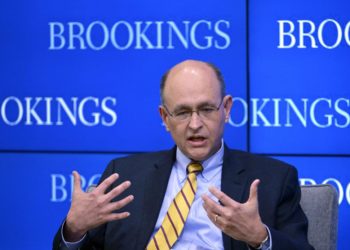The mayor of Tulsa, Oklahoma has unveiled a reparations plan for the descendants of the Tulsa Race Massacre as well as the neighborhood area once known as “Black Wall Street” on the first official remembrance day for the massacre.
Mayor Monroe Nichols’ plan, dubbed “Road to Repair,” centers around a private trust tasked with raising $105 million in assets before June 1, 2026, the 105th anniversary of the massacre.
“The pursuit for better defines greatness – a people that will look back 104 years and dare to be better – dare to come together to face a complicated past and commit to each other for a better future,” Nichols said in a speech Sunday.
Along with the trust, Nichols announced the release of 45,000 historic documents related to the massacre.
“For us as a city, we want to model that we are a partner that wants to foster a level of trust with this entire community,” Nichols, the first Black mayor of Tulsa, told USA TODAY in an interview Monday, June 2. “The massacre has always loomed as an event that really isn’t rooted in a lot of trust over the years, and releasing the documents is one of the things, along with making the Tulsa Race Massacre Day of Observance, I think are really important.”
Nichols said in the interview that the Trust was a way to take the conversation out of the political realm.
“Let’s model for everybody on how this repair work can be really restorative for the entire community, and let’s do that as best we can outside the political context,” Nichols said. “If it’s good for all of us, well, maybe public policy can now follow something that’s been a model good for everybody.”
Where will the money go?
Under the plan, a housing fund will receive $24 million dollars from the trust for housing and homeowner benefits for Race Massacre descendants. A cultural preservation fund will have $60 million to reduce blight and implement parts of a master plan for the Kirpatrick and Greenwood neighborhoods in North Tulsa and a legacy fund will receive $21 million to develop trust owned land and fund scholarships for descendants and economic development grants for the area.
The mayor added that the trust’s work provided an opportunity for parts of the “descendant community” that left Tulsa to be reconnected to the city.
“There’s a lot of families that, after the massacre, decided Tulsa was not the place for them,” Nichols said. “The goal is a scholarship, for example, to go to school in the state of Oklahoma, to come to school here and we will pay the cost of education. The goal, with the business grants and no interest loans, is to open a business here in Tulsa, in the Greenwood District, or North Tulsa, to bring back those great entrepreneurs and business owners whose families may have left Tulsa because of what happened in 1921.”
The trust – named the Greenwood Trust for the neighborhood where the massacre took place in – will employ an executive director and fundraising staff, paid by private funding.
Nichols said in a statement that the first year of the trust would focus on planning and fundraising.
“The next step is now we’re going to make these investments so it’s not just symbolic,” Nichols told USA TODAY. “We’re going to come behind that and make the investments necessary to show that not only are we recognizing (the massacre) but we’re also showing that we’re a much different community in 2025 than we were in 1921.”
What was the Tulsa Race Massacre?
In the early 1900s, 40 blocks to the north of downtown Tulsa boasted 10,000 residents, hundreds of businesses, medical facilities an airport and more. But on May 31, 1921, a white mob descended on Greenwood – the Black section of Tulsa – burning, looting, and destroying more than 1,000 homes.
The massacre is reported to have started with an accusation that Dick Rowland, a 19-year-old shoe-shiner, assaulted a white female teenager in an elevator. Decades later, the 2001 Tulsa Race Riot Commission concluded, Sarah Page, 17, was interviewed by police but made no allegations of assault.
Rowland was arrested and white men went to the jail to demand that he be released to “face mob justice,” Assistant Attorney General Kristen Clarke said in a speech launching a long-awaited Department of Justice probe into the massacre in 2024. A fight broke out after members of the Black community showed up to protect Rowland from being lynched.
A mob then invaded Greenwood, looting and destroying businesses and homes.
Tulsa authorities deputized some white men, instructing them to “get a gun and get busy and try to get” a Black person, according to witness accounts and records at the time. The Oklahoma National Guard participated in mass arrests of nearly everyone living in Greenwood.
“Some suspect that the aim of the white mob was, all along, to appropriate the wealth of the Black community and that the allegations against Mr. Rowland were merely an excuse,” Clarke said.
The true death toll of the massacre may never be known, with the search for unmarked graves continuing more than a century later. Most historians who have studied the event estimate the death toll to be between 75 and 300 people.
In January, the department said that while there are credible reports that law enforcement was involved in the attack, it had no avenue to prosecute the crimes. The department cited the expiration of relevant statutes of limitations and the youngest potential defendants being more than 115 years old.
Contributing: Dale Denwalt, Minnah Arshad – USA TODAY Network; Reuters
This article originally appeared on USA TODAY: ‘Black Wall Street’ reparations plan unveiled by Tulsa mayor
The post Tulsa mayor unveils reparation plan to ‘repair’ community at center of 1921 Race Massacre appeared first on USA TODAY.




